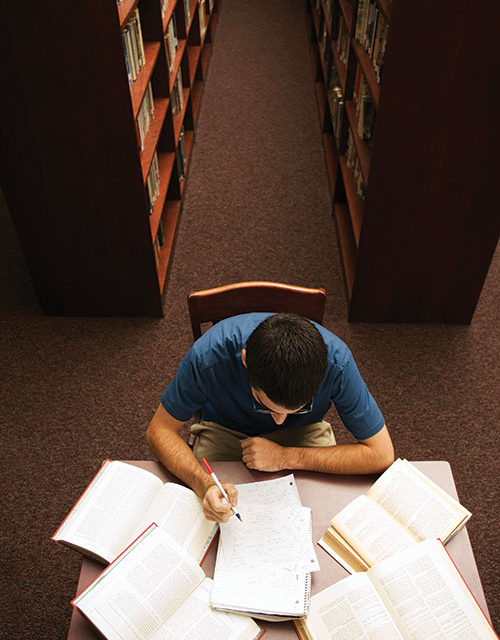by Jeffrey B. Roth
Educators say that plagiarism in academia has been an issue since long before the digital age, but the Internet has exacerbated the problem because it is just a click, copy and paste away.
A 2010 survey of 24,000 students at 70 high schools conducted by Donald McCabe , (now retired), a professor of management and global business at Rutgers University indicated that 64 percent of students admitted to cheating on tests, “58 percent admitted to plagiarism and 95 percent said they participated in some form of cheating, whether it was on a test, plagiarism or copying homework.” A survey by the Psychological Record found that 38 percent of undergraduates admitted to plagiarism.
Irene Hildebrandt, librarian and media supervisor at Carroll County Public Schools, said the school system approaches plagiarism as a matter of the ethical sharing of information. Rather than focus on plagiarism in terms of disciplinary actions, faculty use incidents of plagiarism as a teaching moment, Hildebrandt said.
“Part of our curriculum has to do with copyright and ethical use,” Hildebrandt said. “We have a unit called Ethical Sharing of Information. We try to build good digital citizens by starting in first grade by talking about copyrights.”
Students learn that plagiarism involves the act of stealing another person’s work, Hildebrandt said. When students approach writing research papers, they learn how to properly cite resources.
For English classes, students are encouraged to submit work through the anti-plagiarism software, Turnitin, said Paula Sandridge, Carroll County Public School’s coordinator of curriculum and instructional resources. To use the web-based tool, “students must enroll under their teacher’s direction to submit work. Students may have the teacher submit work for them if a parent objects to their child having direct access to the program,” according to the district’s written policy on use of the resource.
“Next year we are going to encourage all high school teachers to try using the program,” Sandridge said. “It’s not just an issue in English class.”
Deciding how to deal with students who have committed plagiarism is left up to individual teachers, Hildebrandt said. The school district does not have a formal policy dictating how cases of plagiarism are to be handled. The student handbook addresses plagiarism under the section defining “Academic Honesty.”
Tom McHugh, an English high school teacher at Century High School in Sykesville, said his students use Turnitin to check their work to make sure it meets the anti-plagiarism standards. If the Turnitin score is one-third or less of the material is verbatim or similar wording, students are given a green light to submit their work; a two-thirds rating is considered to be a yellow light; and anything over two-thirds is treated as a red light and should not be turned in.
In college, plagiarism is treated as a much more serious issue, said Joel Hoskowitz, integrity and judicial affairs advocate at Carroll Community College. All students are made aware of the code of academic behavior and behavioral standards.
Enforcing the honor code is the responsibility of faculty, Hoskowitz said. The college utilizes a three-strike policy. The first violation is a zero grade. The second is a combination of a zero grade and a failing grade for the course. A third violation requires the student to appear before the integrity council, which could result in a two-year suspension or expulsion.
Alan Bogage, senior director of library, media services and distance learning at the college, said cases of plagiarism may be intentional or unintentional. The difference between the two types of plagiarism is that intentional plagiarism results from knowingly copying someone’s work without attributing the source. Unintentional plagiarism occurs when the student does not know the correct rules for citing sources and/or from sloppy research, Bogage said.
“Panic plagiarism,” according to Michael Kiphart, dean of student affairs, often occurs near the end of a semester when students are facing pressure to get academic reports completed. Pressure to get work completed is not an adequate defense for intentional plagiarism. When student work is submitted through the Blackboard Online Learning system it automatically goes through Turnitin, Kipart said.
Elizabeth Towle, associate dean of students at McDaniel College, said the college does not formally track plagiarism incidents. Instead, plagiarism and cheating are considered as incidents of academic dishonesty.
“We don’t break the numbers down specifically in terms of plagiarism,” Towle said. “We have academic dishonesty situations, but they’re not all related to plagiarism. We don’t have specific numbers.”
McDaniel has a clearly worded process addressing academic dishonesty procedures, which are detailed in the student handbook. Towle said there has not been any consistent pattern of academic dishonesty incidents increasing, decreasing or remaining stable. She did say that the Internet has significantly increased the number of plagiarism incidents.
“The Internet, for many students, has facilitated plagiarism because it’s so easy to find information that they add directly into academic assignments,” Towle said. “I do think the Internet is definitely a source when plagiarism occurs.”


